
|   |

|   |
Dance beyond borders - Satish Suri e-mail: satishism@yahoo.co.in January 5, 2025 THE SEVENS Photos: V.B.Suresh The Sevens presented by UK based Srishti on the 16th of December at the Bangalore International Centre, featured Nina Rajarani, the artistic director, choreographer and Bharatanatyam artiste alongside four dancers and three musicians in a dynamic ensemble. The performance included three distinct pieces: Seven Snags, Seven Steps, and Seven Sins, each exploring the sacred and sinful significance of the number seven. The triple bill of Sevens showcased a fascinating interplay between tradition and contemporary narratives, blending Bharatanatyam and Kathak with thought provoking themes. A rhythmic explosion of youthful energy, Seven Snags captured the exhilaration and complexities of modern relationships. The piece's abstract choreography mirrored the unpredictable dynamics of dating in today's fast-paced world, drawing parallels with the spontaneity and impulsiveness of speed dating and dating apps. The playful flirtation and liberties of youth were expressed through intricate footwork and dynamic cross rhythms, demonstrating the agility and versatility of both Bharatanatyam and Kathak dancers. This was a vibrant exploration of how traditional dance can reflect contemporary social phenomena. 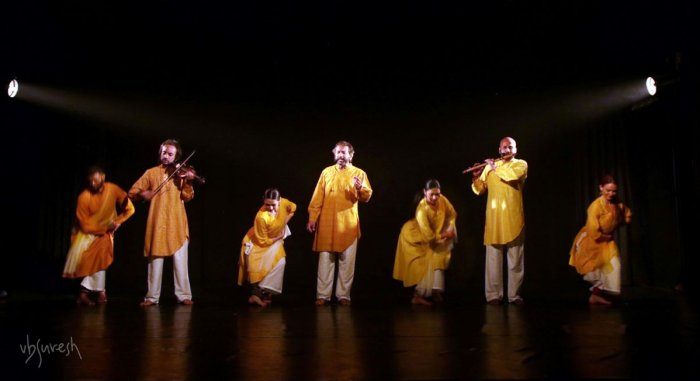 Sevens Rooted in the sanctity of the Hindu marriage rite of saptapadi, this duet between Nina Rajarani and Y. Yadavan elevated the age-old ritual into an intimate artistic expression. Each step was imbued with timeless vows, creating a profound connection between the dancer's movements and the vocalist's compositions. This piece underscored the universality of commitment and mutual respect in relationships, transcending cultural boundaries. Through its simplicity and emotional depth, Seven Steps bridges ancient traditions with modern relevance. Seven Sins delved into the human psyche, questioning societal constructs of morality. The abstract choreography unpacked the weight of sin as an emotional and psychological burden. Through the lens of unmet needs and human vulnerability, this piece critiqued the duality of modern society—its simultaneous promotion and condemnation of wealth, desire, and indulgence. The dancers embodied guilt, pain, and eventual acceptance, transitioning from turmoil to self-forgiveness. The narrative reflected a journey from inner conflict to empathy, urging audiences to consider compassion over judgment. The seamless collaboration of four dancers with three live musicians, woven intricately into the choreography, enriched the experience by creating a dynamic interplay between rhythm, melody, and movement. This fusion added layers of depth to the performance, combining the rhythmic vitality of classical dance with the evocative power of live music to enhance emotive storytelling. Nina Rajarani's choreography redefines classical Indian dance by seamlessly blending traditional Bharatanatyam and Kathak with contemporary themes. Her innovative approach transcends conventional frameworks, exploring modern-day narratives into the classical repertoire while preserving its essence. This fusion captivates audiences, offering fresh perspectives that keep the art forms timeless and relevant, demonstrating how tradition can dynamically engage with the modern world. 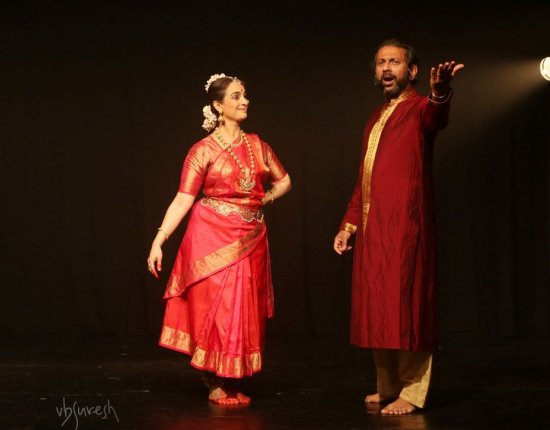 Sevens - Nina Rajarani & Yadavan Nina Rajarani, Y. Yadavan, Kirsten Newell, Suhani Dhanki Mody, Mithun Gill, Abirami Eswar, Mathusuthanan Satchithananthan, and Kartik Raghunathan formed a formidable ensemble, whose collaboration brought unparalleled synergy to the production. Each artiste's unique expertise and creative input contributed to a harmonious blend of movement, music, and narrative. This dynamic team exemplified the power of collaboration, with Kirsten Newell, Suhani Dhanki Mody, Mithun Gill, and Abirami Eswar showcasing technical brilliance and emotional depth, seamlessly executing Nina Rajarani's intricate choreography. Y. Yadavan's vocals resonated with emotional depth, harmoniously blending classical precision with contemporary expressiveness to complement the narrative arcs of the choreography. Mathusuthanan Satchithananthan's flute added lyrical elegance, evoking a range of moods from meditative serenity to playful energy, perfectly aligning with the dancers' movements. Kartik Raghunathan's violin wove intricate melodic tapestries, bridging tradition and innovation to create a harmonious synergy between the music and the dance. Together, their live accompaniment elevated the production and deepened the audience's engagement. Nina Rajarani's vision as a choreographer provided the guiding force that unified diverse talents into a cohesive artistic expression. THE UPAHAAR DANCE COMPANY Photos: Sujith Kumar The Upahaar Dance Company based in the UK, presented a Bharatanatyam margam titled "Natranjali" on December 25th at the Bangalore International Centre. The performance was a homage to Lord Nataraja, the cosmic dancer. The artistic director Shalini Shivashankar (a disciple of the late Padmini Ramachandran and currently training under the Dhananjayans), along with her disciples Amiya Kumar and Diya Ponsudhar, were featured in the rendition. The presentation began with a serene dhyana shloka followed by a Pushpanjali, an offering of flowers to the deity, concluding with an Alarippu choreographed by Radhika Shurajit, blending tradition with refined artistry. 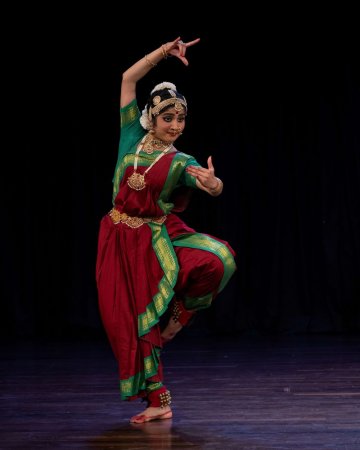 Diya Ponsudhar The next piece was the keerthanam "Adum Paadanai" in ragam Lathangi, set to adi talam, a composition by Ambujam Krishna. Performed as a solo by Diya Ponsudhar, this piece beautifully highlighted the majestic dance of Nataraja. The choreography depicted Nataraja's divine attributes—the flowing Ganga, blazing fire, and formidable axe while showcasing his veneration by the sages of Tillai, who stand in awe of his grandeur. His dancing form, embodying the five elements, was brought to life with elegance and dynamism. Natyacharya Dhananjayan's innovative choreography was evident in this piece. Diya Ponsudhar's performance effectively conveyed the spiritual and elemental essence of Nataraja's cosmic dance. The Sankarabharanam padavarnam, "Ati Moham" (adi, Ponnayya Pillai), stood out as the piece de resistance of the evening, celebrated for its exquisite music, intricate jatis, and nuanced interpretation. Choreographed by the Dhananjayans, this masterpiece was performed as a solo by Shalini Shivashankar. It portrays a heroine deeply in love, confiding in her friend and pleading with her to act as a messenger to her beloved Lord. She urges her friend to bring him to her promptly but insists that this be done with utmost secrecy. The piece captured the intensity of her longing, her vulnerability, and the delicate balance of love and discretion, expressed through heartfelt lyrics and emotive storytelling. Overwhelmed by the torment of Cupid's arrows, she pleads with her divine beloved to end her suffering. The depiction resonated with intense sringara (romantic love), blending yearning and devotion, as the nayika's longing transcends earthly desire to embody a profound spiritual connection. This emotional plea captures the duality of human vulnerability and divine aspiration, beautifully reflecting the essence of bhakti sringara. The jatis imbued with an old-world charm, were both serene and dynamically rhythmic, executed with flawless control and precision. Shalini's style seamlessly combined geometry with fluidity, characterized by well-defined movements, impeccable footwork, a straight back, and a strong araimandi stance. 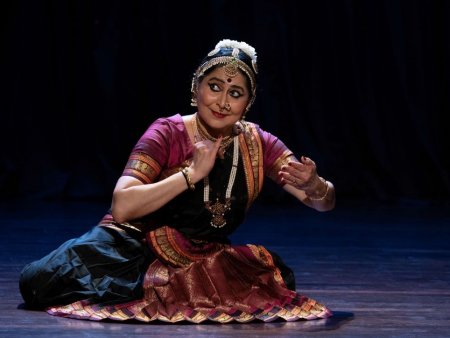 Shalini Shivashankar The padam "Poonkuyil," a composition by Kalki Krishnamurthy, performed by Amiya Kumar beautifully portrayed a young girl experiencing the bliss of first love with Lord Muruga. The piece captured the magical moment of seeing Lord Muruga, his sudden disappearance, and the transformative after-effects of that divine encounter. The nayika reflects on her changed perspective, noticing newfound clarity in her thoughts and surroundings. Filled with hope and confidence in Lord Muruga's generosity, she believes he will return to her. Choreographed by Radhika Shurajit, the artiste's interpretation brought the padam to life. The storytelling was captivating, seamlessly blending devotion and romantic longing in a performance rich in narrative depth and artistry. The ensemble presented "Shankara srigiri natha prabho," a vibrant composition by Swati Tirunal. The piece was characterized by strong nritta and fluid movements, marked by precise coordination with the rhythmic beats of the tala. The performance showcased the dancers' technical prowess through impeccable footwork, ease and control, seamlessly blending pure dance with expressive abhinaya. The choreography described the grandeur of Lord Shiva's cosmic dance, capturing its energy and magnificence. This brisk and dynamic number added vitality to the recital, culminating in the portrayal of the Padmanabha pose with striking swiftness, leaving the audience in awe of the dancers' synchronization and artistry. 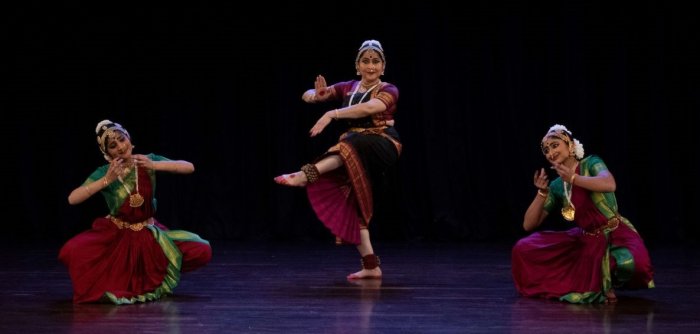 Upahaar Dance Company The recital concluded with a Thillana, a composition by Dr. M Balamuralikrishna in ragam Kadanakuthuhalam. The portrayal was marked by symmetry and the systematic execution of nritta, a hallmark of the artiste's mastery. The Thillana provided a jubilant and energetic finale, leaving the audience enthralled by its vibrancy and the performers' impeccable coordination. The performance was accompanied by a recorded musical track. The rich musical backdrop added depth and vibrancy, perfectly complementing the dancers' movements and elevating the emotional and rhythmic impact of the presentation. KALAVARIDHI CENTER FOR PERFORMING ARTS Photos: Srivatsa Shandilya's team It was indeed a very memorable evening on 28th December at the Indian Institute of World Culture, Bangalore, with the students of Sheela Ramanath, senior disciple of Guru Bhanumati and artistic director of the Kalavaridhi Center for Performing Arts based in Virginia, USA. The performance featured Anisha Namboodripad, Diya Kotha, Hansika Viswanathan, and Namrata Swaminathan, who showcased some of Guru Bhanumati's avant-garde choreographies. The dancers began with a Pushpanjali in raga Naatai, which served as an invocatory piece utilizing the rhythmic framework of adi tala, setting a reverent tone for the performances that followed. The solo presentation by Anisha Namboodripad featured a Kautvam composed by D.V. Prasanna Kumar, which extolls the greatness of Ganapathi. Anisha's interpretation, guided by Sheela Chandrasekhar's choreography, emphasized both the lyrical beauty of the composition and the spiritual essence of the deity conveying reverence and admiration for Ganapathi, celebrating his significance as the remover of obstacles and the harbinger of success. Hansika Viswanathan's solo portrayal of the kriti "Sri Chamundeswari palayam" by Mysore Vasudevacharya beautifully described the Goddess Chamundeswari and her many attributes, particularly her role as the slayer of the demon Mahishasura. This kriti, composed in the raga Bilahari and set to adi tala, extols the divine qualities of Chamundeswari, emphasizing her fierce strength and protective nature. Hansika Viswanathan's portrayal served as a powerful homage to the goddess, encapsulating her multifaceted nature through a blend of technical skill and emotional depth demonstrating her ability to navigate the complex choreography of Sheela Ramnath while maintaining grace. The exposition of Goddess Saraswati of Sringeri was through the composition of Padmacharan's "Shringapuradheeswari Sharade" choreographed by Bhanumati and performed by Swapna Surendran. The choreography highlighted her many attributes, as one who embodies knowledge, music, art and wisdom, portraying her as a nurturing and powerful figure. Swapna Surendran's performance showcased her technical skill, reflecting the profound significance of Goddess Saraswati., while the nuanced expressions allowed the dancer to convey deep devotion and reverence. 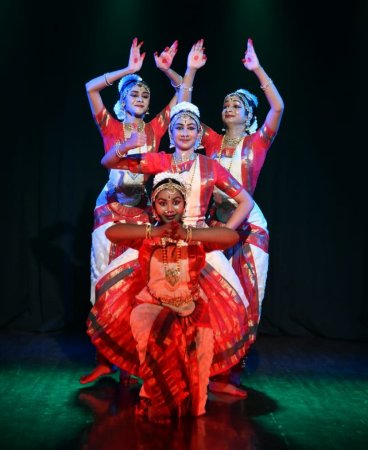 Kalavaridhi ensemble The group presentation of "Tanigaimalai Vaazhum Kumaresa," set in Ragamalika and adi tala, invoked a freshness that highlighted the pristine choreography of Bhanumati. This piece placed significant importance on aesthetics, utilizing geometric patterns and kaleidoscopic formations that are hallmarks of her style. The choreography's focus on visual impact enhanced the overall experience, creating a captivating spectacle that engaged viewers on multiple levels. The artistes enthralled the audience with their geometric perfection of movements, showcasing synchronized formations that reflected meticulous planning and execution. Their evocative abhinaya added emotional depth to the performance, allowing the audience to connect with the narrative on a personal level. The final frieze depicting Muruga was particularly visually appealing and aesthetic, serving as a powerful conclusion that left a lasting impression. Diya Kotha's exposition of the Papanasan Sivan composition "Idadhu padam thooki adum" in Khamas beautifully extolled Lord Nataraja, showcasing his divine dance alongside Lord Vishnu. Choreographed by Sheela Ramanath, this performance encapsulated the beauty of movement, highlighting the intricate interplay between the music and dance. The lyrics invite the mind to bow before the feet of the deity, emphasizing humility and surrender. The choreography's emphasis on fluidity and grace enhanced the visual spectacle, allowing audiences to appreciate both the technical skill and the spiritual essence of the dance. Overall, Diya Kotha's rendition served as a vibrant celebration of Lord Nataraja's divine attributes, effectively merging artistry with devotion. The solo exposition of "Nada murali gana vilola" composed by Oothukkadu Venkata Subbaiyer in raga Hamir Kalyani and set to adi tala, was performed by Namrata Swaminathan, showcasing her artistic acumen and unmistakable grace. The lyrics of this piece emphasize deep devotion to Lord Krishna, featuring references to Narada and Gopal. Namrata's interpretation highlighted her proficiency in using mudras that effectively conveyed the emotions and stories embedded in the lyrics. Her footwork was engaging and precise, articulating the rhythmic sequences with clarity and exuberance, which further enhanced the overall mood of the rendition. 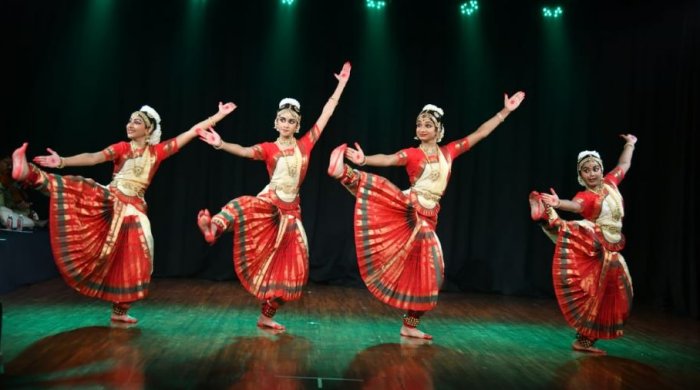 Kalavaridhi ensemble The vibrant Thillana in raga Valachi composed by Dwaraki Krishnaswamy, provided a fitting finale to the program, culminating in a Mangalam. The composition showcased lively movements that embody the exuberance of dance, celebrating the artistry and dedication of the dancers. The live music orchestra featuring D. Srivatsa (vocal), Narasimhamurthy (flute), Mattur Srinidhi (violin), Sheela Ramanath (nattuvangam), Narayanaswamy (mridangam) and Rishi Swaminathan (rhythm pad), provided a rich aural soundscape that enabled the dancers to express the underlying sentiments of the music fully. The synergy between the live orchestra and the dancers exemplified the essence of classical dance, where music and movement unite to create a profound artistic experience. 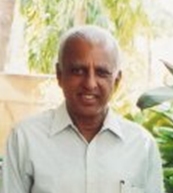 Bangalore based Satish Suri is an avid dance rasika besides being a life member of the Music and Arts Society. |